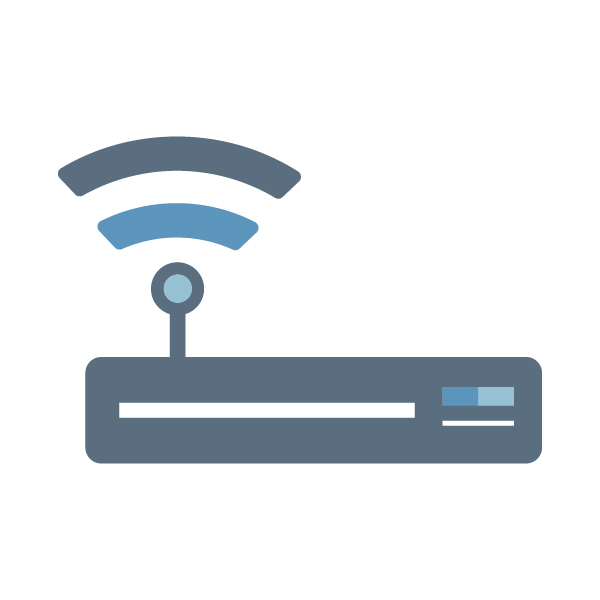-
€



Huawei S380-L4P1T is a gateway from the eKitEngine series, combining router and managed Layer 3 switch functionalities. It is equipped with 5 gigabit Ethernet ports, including 1 WAN port and 4 LAN ports. The LAN ports feature PoE+ output, with a maximum power per port of 15.4 W for 802.3af or 30 W for 802.3at. The total power budget for the entire device is 50 W. The maximum switching throughput is 8 Gb/s, with egress throughput of 1 Gb/s. S380-L4P1T can handle up to 200 users and supports DHCP server/client, DNS client, PPPoE client, ACL, and NAT functionalities. Management can be performed via the graphical web interface, application, or SSH. The device features a compact desktop enclosure and passive cooling. It operates using an external power adapter with specifications of 56 V DC / 1.07 A, with a maximum power consumption of 61.65 W at full load. S380-L4P1T is well-suited for small networks with up to 4 access points, serving as both a router and the primary and access switch. This setup simplifies the network structure by allowing APs to be directly connected to it.
5x gigabit Ethernet
The device is equipped with 5 gigabit Ethernet ports (10/100/1000 Mb/s), including 1 WAN port and 4 LAN ports. The switching throughput is 8 Gb/s, with packet forwarding speeds of 300 Kp/s for transmission and 420 Kp/s for reception.


4 PoE+ outputs
On all LAN ports, there is PoE+ power output available. The maximum power per port, according to the standard, is 15.4 W for 802.3af or 30 W for 802.3at. The total power budget is 50 W, sufficient to connect 4 access points with a power requirement below 12 W each.
The use of PoE allows you to power and transmit data through an Ethernet cable. With this type of switch, you only need to run one cable to each access point, eliminating the need for additional power supplies.
Built-in controller
The S380-L4P1T can function as a controller (WAC) for eKitEngine access points. You can connect a maximum of 32 APs and up to 200 users simultaneously to the device. These capabilities are sufficient for small networks, including home and office environments.


Router functionality
The offered product also serves as a router, supporting NAT and DHCP server functionalities. Management can be done through the graphical Web interface, application, or via SSH. The software allows you to monitor network status and diagnose any issues that may arise during its operation.
3 in 1
Huawei S380-L4P1T combines the functionality of a switch, router, and access point controller. With PoE support, it allows for the removal of a separate access point switch, enabling direct connection of access points. In networks with up to 4 access points, the S380-L4P1T can function as the sole device alongside the access points. It's well-suited for large homes or small offices, offering cost savings for the entire system while ensuring efficient and stable operation.

Specifications
| Huawei S380-L4P1T | |
| Maximum user | 200 |
| Switching capacity | 8 Gb/s |
| Packet forwarding rate |
Upload: 300 Kp/s Download: 420 Kp/s |
| Egress bandwidth | 1 Gb/s |
| Fixed WAN port |
1x gigabit Ethernet 10/100/1000 Mb/s |
| Fixed LAN port | 4x gigabit Ethernet 10/100/1000 Mb/s with PoE+ |
| MAC address entry | 2K |
| Chassis dimensions (H x W x D) |
35 x 210 x 130 mm |
| Chassis height | 1U |
| Weight | 0,7 kg |
| Power module type | Power adapter |
| Rated input voltage | 100 - 240 V AC, 50/60 Hz |
| Input voltage range | 90 - 264 V AC, 45 - 65 Hz |
| Maximum power consumption |
Without PoE: 11,65 W With PoE: 61,65 W (PoE: 50 W) |
| Long-term operating temperature | 0°C to 40°C (0 m to 1800 m) |
| Storage temperature | –40°C to +70°C |
| Relative humidity | 5% to 95% (non-condensing) |
| Heat dissipation mode | Natural heat dissipation |
| Service Features | |
|---|---|
| Interface basics | VLAN Jumbo frame Port Up/Down detection Port auto-negotiation VLANIF interface |
| Ethernet basics | 16 VLANs Port types: access, trunk, and hybrid Port-based VLAN assignment Automatic MAC address learning Automatic MAC address aging and static MAC address entries MAC Filtering |
| IPv4 unicast routing | Static routing |
| WAN optimization | Load balancing: terminal IP address–based and connection-based |
| User access | DHCP server/client, DNS client, PPPoE client,ACL, and NAT |
| Device management | Web system APP SSH |
| Device maintenance |
Ping Tracert One-click diagnosis |






 Polski
Polski English
English Italiano
Italiano Español
Español Čeština
Čeština Српски
Српски Deutsch
Deutsch Ελληνικά
Ελληνικά Slovenský
Slovenský




